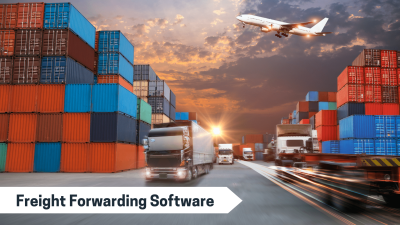The logistics and transportation sector is a remarkable exception, even though current technological tools and systems are well-established in most businesses. The logistics shipping software business has significant obstacles in adopting technology because of its intrinsic complexity, global scope, and subpar historical practices.
However, several PO Box Software solution providers have recently created reliable technology for shipping software solutions that are meant to streamline the shipment tracking software procedure and improve the operations of the logistics sector. One of the key companies in this market is BoxOn Logistics, which is quickly earning a reputation for offering top-notch supply chain software solutions.
Let’s start with some of the essential techniques for implementing package tracking software in large organizations.
Things to Do When Implementing a PO Box Software Solution
Following a few typical recommended practices may help you develop a logistics software system are:
1) Create a thorough project plan
It is essential to create a thorough project plan that outlines each phase and milestone, accounts for potential difficulties, and offers shipment-tracking software solutions. Timelines and a description of each stakeholder’s role’s boundaries must be included in the project plan.
2) Obtain support from key stakeholders.
This can nearly immediately result in the implementation failing if it is ignored. All stakeholders across departments and hierarchical levels must actively support and cooperate for an implementation to be effective. The project plan can be derailed or implemented slowly if even one stakeholder is not dedicated to it.
3) Pick the proper software program
It entails comparing several shipping software solutions based on features, timelines, and other selection factors.
4) Giving proper training and assistance
End users must be instructed on how to use the program after it has been purchased, and that assistance is given as needed. Any oversights in this area may result in less-than-ideal system usage and a failure to fully reap the rewards.
5) Tracking and assessing outcomes and gains
The firm needs to put in place a system to keep track of the PO Box software’s performance and assess if it delivers the advantages listed in the business case.
When using a logistics software solution, avoid these mistakes.
Certain dangers that businesses should avoid include:
1) Launching initiatives quickly
When it comes to execution, businesses frequently rush into action without taking a comprehensive approach or considering the ramifications for all stakeholders, endangering the project’s success.
2) Ignoring the user experience
Given that the package tracking software deployment will eventually cause a fundamental shift in how workers operate, failing to consider the end-user experience and failing to make sure the system is user-friendly may prevent the anticipated benefits from materializing.
3) Exaggerating the technological requirements
Making sure the current IT infrastructure can support the program and enable its seamless operation is a need before adopting any shipment tracking software. If this element is ignored, the system might not operate as it should.
4) Disregarding possible risks
Any software implementation carries risks that could make or break the project. It is essential to map out potential hazards and create effective defenses against them.
5) Forgetting about follow-up assistance
Users will feel as though the system has been forced upon them if they do not receive post-implementation support, which will result in a bad user experience.
Tips for Handling Obstacles When Putting in Place a Logistics Software Solution
1) Employees’ opposition to change
Any organizational change will likely run against this issue. It may be controlled by having open and honest communication with the workforce. The management should make it a point to address employees’ questions, explain the package tracking software’s benefits, and allay their anxieties.
2) Monitoring data migration
Organizations should make sure that data has been cleaned up and is of a high enough standard. Every piece of information needs to be standardized and, if possible, digitalized.
3) Ensuring proper software integration
Companies must consider the likelihood of connecting with existing systems and make plans for synchronization with the company’s existing operations when purchasing logistics software.
4) Ensuring security and conformity
The proposed software and its implementation must be assessed considering the organization’s safety procedures and pertinent legal requirements. The project manager is responsible for making sure that the rules governing data security and privacy are followed.
5) Ongoing upkeep and modifications
To guarantee that routine maintenance takes place at designated times and that system upgrades are implemented, a maintenance schedule must be created.
Conclusion
The sector might be completely transformed using PO Box software solutions, which would also benefit customers more. These solutions will inevitably need to be used by logistics service providers to maintain their competitive edge.
Implementing a shipping software solution may seem difficult, but keeping the advice in mind will help it go more smoothly. Best-in-class solutions are provided by software companies like BoxOn Logistics.
For more details book a demo with us to know more about the software. https://www.boxonlogistics.com/request-demo/






COMMENTS